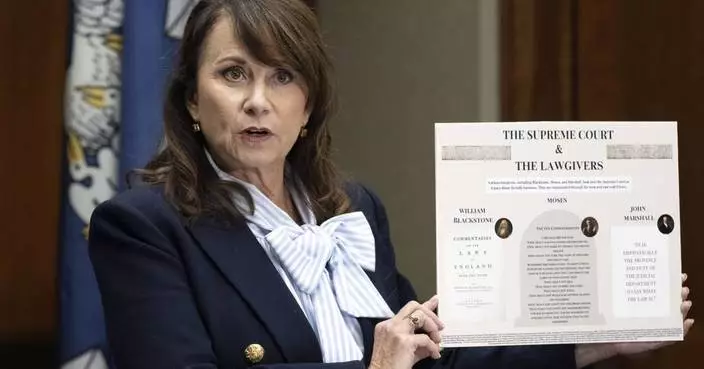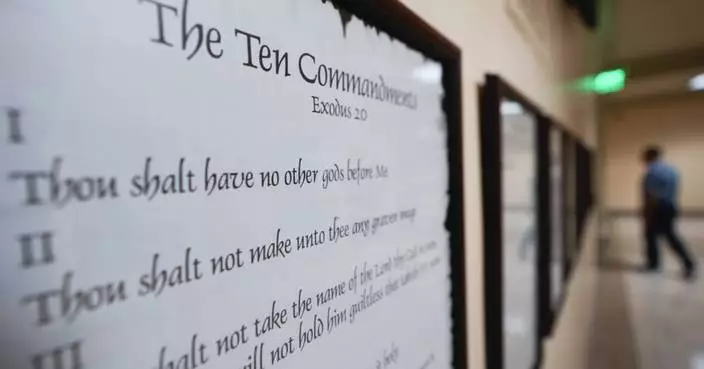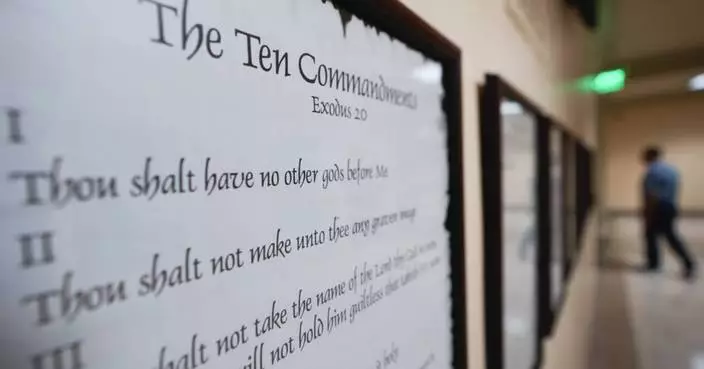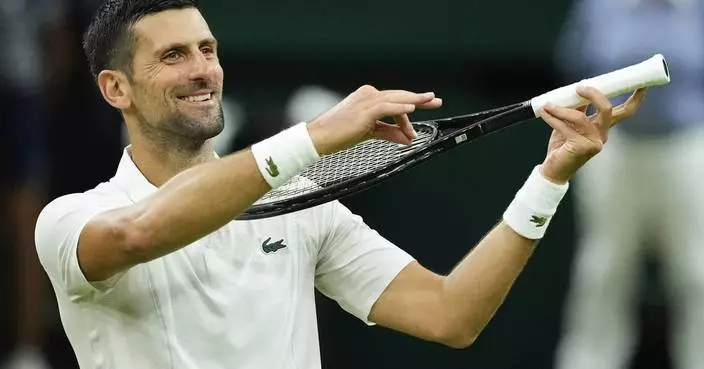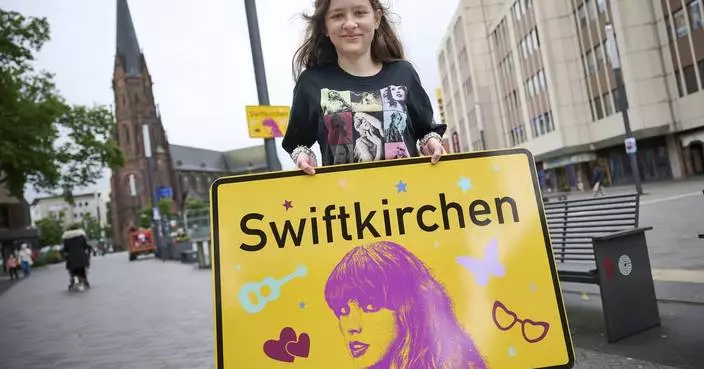Zheng Saisai of China used steady, looping groundstrokes and patience to capture her first career singles title, beating Aryna Sabalenka of Belarus 6-3, 7-6 (3) in the Mubadala Silicon Valley Classic on Sunday.
Saisai, who is ranked 55th and played one more match than Sabalenka to reach Sunday's championship, topped three seeded players on the way to her second career final and first victory at age 25. She was runner-up at Nanchang last year.
Click to Gallery
Zheng Saisai of China used steady, looping groundstrokes and patience to capture her first career singles title, beating Aryna Sabalenka of Belarus 6-3, 7-6 (3) in the Mubadala Silicon Valley Classic on Sunday.
Her power was neutralized by Zheng's regular topspin shots and digs to keep long rallies alive.
The two met once previously, with Zheng winning in straight sets on the ITF circuit in 2017. Each woman had played one three-set match this week.
This marked the second year the event has been played at San Jose State University after moving from Stanford.
Zheng Saisai, of China, returns the ball to Aryna Sabalenka, of Belarus, during the finals of the Mubadala Silicon Valley Classic tennis tournament in San Jose, Calif., Sunday, Aug. 4, 2019. (AP PhotoTony Avelar)
Aryna Sabalenka, of Belarus, hits a backhand to Zheng Saisai, of China, during the finals of the Mubadala Silicon Valley Classic tennis tournament in San Jose, Calif., Sunday, Aug. 4, 2019. (AP PhotoTony Avelar)
Zheng Saisai, of China, serves the ball to Aryna Sabalenka, of Belarus, during the finals of the Mubadala Silicon Valley Classic tennis tournament in San Jose, Calif., Sunday, Aug. 4, 2019. (AP PhotoTony Avelar)
Aryna Sabalenka, of Belarus, reacts after losing the first set against Zheng Saisai, of China, during the finals of the Mubadala Silicon Valley Classic tennis tournament in San Jose, Calif., Sunday, Aug. 4, 2019. (AP PhotoTony Avelar)
With her big topspin shots landing deep and the defensive ability to chase down balls all over the court, Zheng flustered opponents all week with her consistency and level-headed play — and the emotional Sabalenka was no different. She threw her racket after double-faulting on the first match point, slammed her racket to the court at one point and also hit it on the net in frustration in an afternoon of unforced errors after the 21-year-old missed on a fourth career title. The second-seeded Sabalenka, who lost in the first round of qualifying here in 2018, rode her powerful first serve to reach to her seventh final and is projected to match her career-high ranking of ninth.
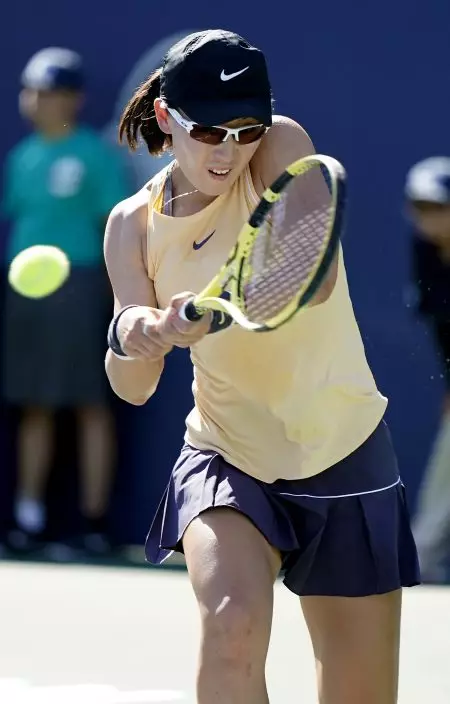
Zheng Saisai, of China, hits a backhand to Aryna Sabalenka, of Belarus, during the finals of the Mubadala Silicon Valley Classic tennis tournament in San Jose, Calif., Sunday, Aug. 4, 2019. (AP PhotoTony Avelar)
Her power was neutralized by Zheng's regular topspin shots and digs to keep long rallies alive.
"I couldn't control my emotions. I was throwing my rackets," she said. "... Her game destroyed me because I couldn't use my power. I wasn't ready for that."
Zheng's victory could propel her to No. 38 — matching her career best — when Monday's new singles rankings are released.
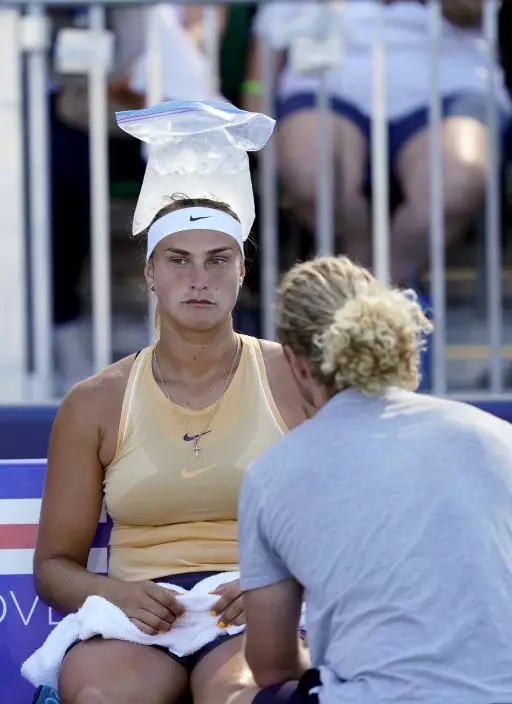
Aryna Sabalenka, of Belarus, uses a bag of ice on her head to cool off as she talks to her coach during a break in the match against Zheng Saisai, of China, during the finals of the Mubadala Silicon Valley Classic tennis tournament in San Jose, Calif., Sunday, Aug. 4, 2019. (AP PhotoTony Avelar)
The two met once previously, with Zheng winning in straight sets on the ITF circuit in 2017. Each woman had played one three-set match this week.
Venus Williams lost her opening match Tuesday night after reaching last year's quarterfinals here. The 39-year-old, seven-time Grand Slam champion was in the field for the 15th time, this year as a wild-card entry.
In the doubles final, Kveta Peschke of the Czech Republic and American Nicole Melichar defeated Japanese tandem Shuko Aoyama and Ena Shibahara 6-4, 6-4 earlier Sunday.

Aryna Sabalenka, of Belarus, reacts after winning a point against Zheng Saisai, of China, during the finals of the Mubadala Silicon Valley Classic tennis tournament in San Jose, Calif., Sunday, Aug. 4, 2019. (AP PhotoTony Avelar)
This marked the second year the event has been played at San Jose State University after moving from Stanford.
More AP sports: https://apnews.com/tag/apf-sports and https://twitter.com/AP_Sports
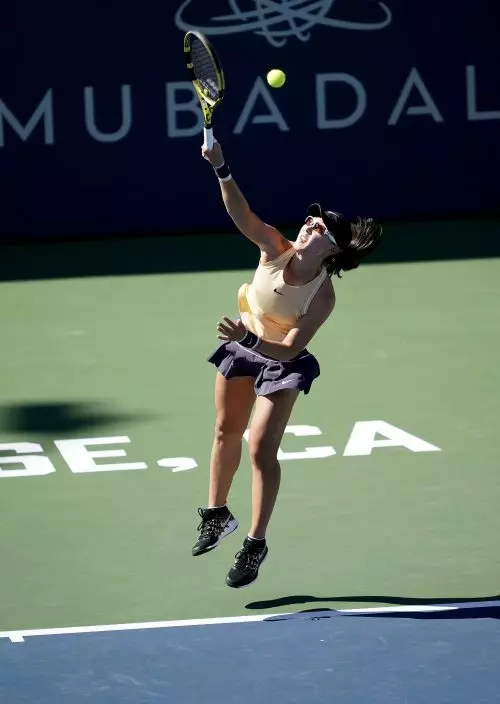
Zheng Saisai, of China, serves the ball to Aryna Sabalenka, of Belarus, during the finals of the Mubadala Silicon Valley Classic tennis tournament in San Jose, Calif., Sunday, Aug. 4, 2019. (AP PhotoTony Avelar)
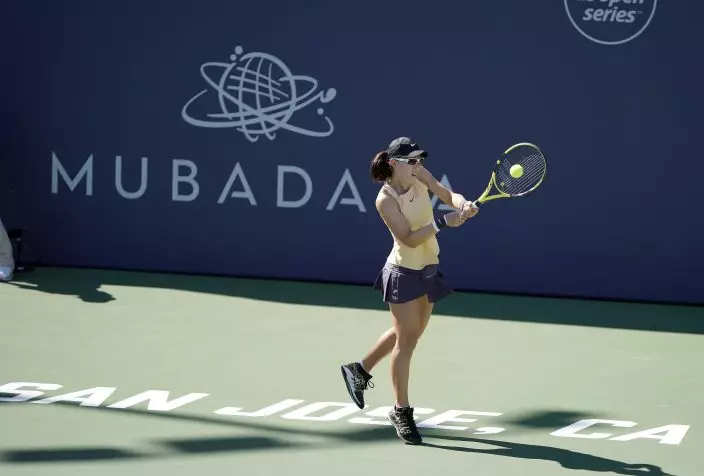
Zheng Saisai, of China, returns the ball to Aryna Sabalenka, of Belarus, during the finals of the Mubadala Silicon Valley Classic tennis tournament in San Jose, Calif., Sunday, Aug. 4, 2019. (AP PhotoTony Avelar)
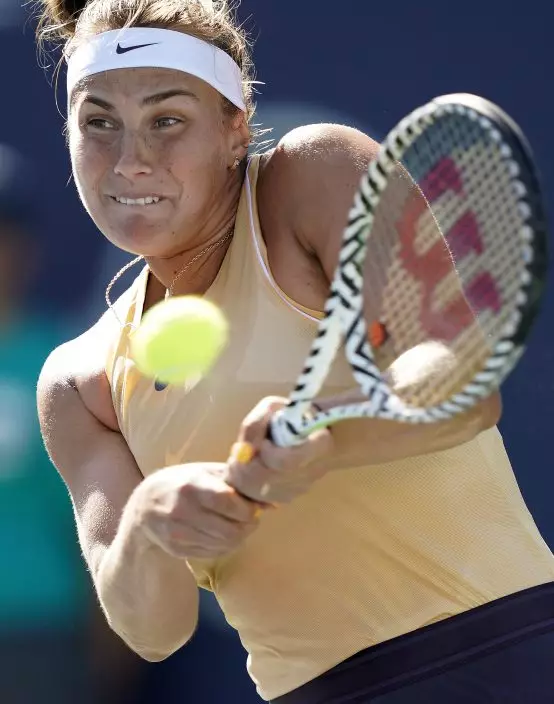
Aryna Sabalenka, of Belarus, hits a backhand to Zheng Saisai, of China, during the finals of the Mubadala Silicon Valley Classic tennis tournament in San Jose, Calif., Sunday, Aug. 4, 2019. (AP PhotoTony Avelar)
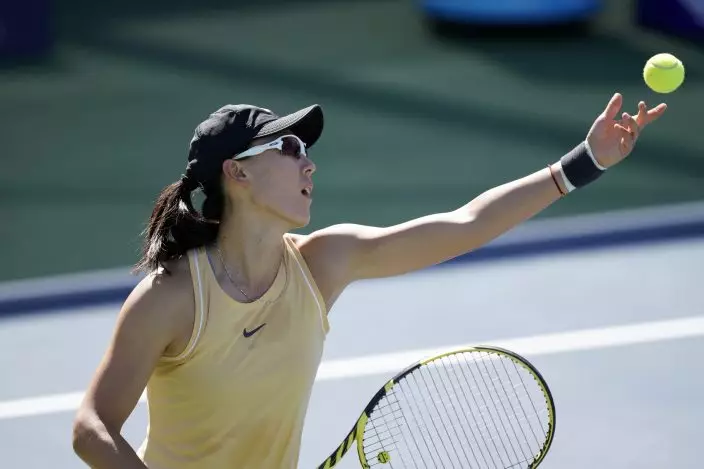
Zheng Saisai, of China, serves the ball to Aryna Sabalenka, of Belarus, during the finals of the Mubadala Silicon Valley Classic tennis tournament in San Jose, Calif., Sunday, Aug. 4, 2019. (AP PhotoTony Avelar)
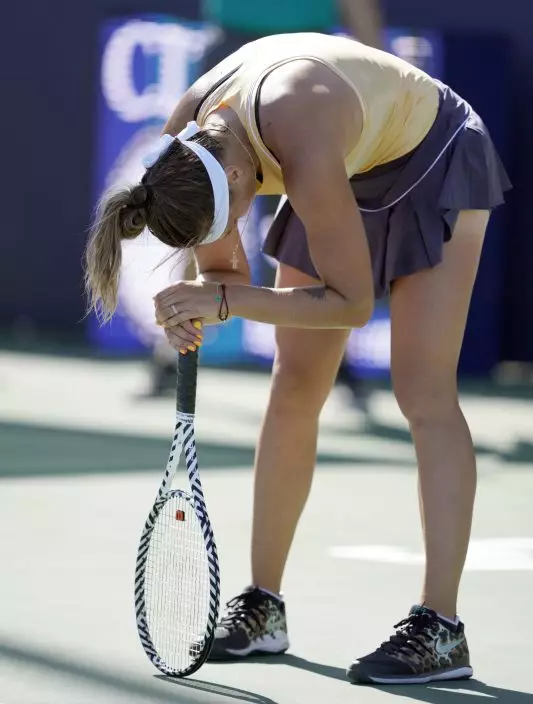
Aryna Sabalenka, of Belarus, reacts after losing the first set against Zheng Saisai, of China, during the finals of the Mubadala Silicon Valley Classic tennis tournament in San Jose, Calif., Sunday, Aug. 4, 2019. (AP PhotoTony Avelar)
Faced with the prospect of dealing a potentially fatal blow to a conference it helped start more than 100 years ago, Oregon decided to leave the Pac-12 t o join the Big Ten even though that meant taking half the annual revenue payout established members receive for several years.
The Ducks really had no choice.
In the new era of college football, there are three categories: Those who are in the Big Ten or the Southeastern Conference; those pondering how to get into the Big Ten or SEC; and those wondering if they are in danger of being left behind by the Big Ten and SEC.
The days of the Power Five are over. Now, it's a Super Two.
Whether this is good for the overall health of major college athletics is uncertain. But for now, at a time when college sports has never been more volatile, the Big Ten and SEC are wealthy bastions of stability.
“An incredibly strong conference, amazing TV deals, incredible partner, certainly exciting times to be part of the Big Ten,” Oregon athletic director Rob Mullens recent said recently on the Navigating Sports Business podcast. “So lots of excitement from our student-athletes, our coaches. Our fans are thrilled.”
Three years of tumultuous and destructive conference realignment spawned the superconference era and there are none more powerful than the Big Ten and SEC — on the field and off.
The 18-team Big Ten now stretches from coast to coast, with the additions of USC, UCLA, Oregon and Washington, and features four of the top 10 teams in the preseason Associated Press Top 25 college football poll, including defending national champion and No. 9 Michigan.
The SEC welcomes former Big 12 powers Texas and Oklahoma, adding two schools with a combined 11 football national championships to a conference that has won 13 titles since 2006. Four of the top six teams in the country right now are in the SEC, including No. 1 Georgia, one of nine SEC teams overall in the Top 25.
The consolidation of more of college football’s biggest brands and traditional powers took the Pac-12 out of the picture and trimmed the Power Five to four.
“I’m not sure that that’s what’s best for the health of college football nationally,” said former Fox Sports executive Bob Thompson. “Now, as a TV guy, if I’m going to pay increasing dollars, I’m going to want better match ups.”
As new mega media-rights deals kick in this season for the Big Ten and SEC, the revenue gap between the ACC and Big 12 will continue to grow. Those conferences have all but conceded that the competition — at least when it comes to comparing bank accounts — is for No. 3.
On the field, the SEC is unmatched. At the bank, the Big Ten actually has a slight edge. According to tax filings released in May, the Big Ten reported revenue of $879.9 million compared with $852.6 million for the SEC.
The ACC was a distant third even though it jumped from $617 million in 2021-22 to $707 million in 2022-23.
The Pac-12, which saw 10 of its 12 members disperse to other conferences this summer, generated $603.9 million. The Big 12 was fifth at $510.7 million.
The Super Two also threw their weight around in the latest negotiations for the newly expanded College Football Playoff. In the previous deal, the Power Five conferences took home about the same share of revenue from the CFP deal with ESPN.
The new CFP contract with ESPN is worth $7.8 billion through the 2031 season and the Big Ten and SEC will split close to 60% of the revenue yearly — about $21 million per school while Big 12 and ACC schools take home $12 million to $13 million per year.
SEC Commissioner Greg Sankey and Big Ten Commissioner Tony Petitti also created an advisory committee earlier this year where two conferences can work together — and without the ACC and Big 12 — on issues facing college sports. Only the Big Ten is truly in position to push back on the SEC — and vice versa — when it comes to shaping the future of college sports.
“There’s going to be checks and balances between those two because they need each other,” former Big 12 Commissioner Dan Beebe said.
As the separation grows, it creates instability in the other conferences.
Florida State and Clemson have sued the ACC with an eye toward an affordable exit. FSU officials have cited the prospect of trying to keep up with Big Ten and SEC competitors with conference revenues that put the school at a $40 million per year disadvantage.
There appears to be peace and alignment in the Big 12, which adds Arizona, Arizona State, Colorado and Utah this year, but for how long?
"If Utah had a chance to go to the Big Ten tomorrow they would take it," Beebe said. “And probably every other school in conferences that are making half as much money because it’s become about money — and they’re going to have payments to make to players.”
As part of a $2.8 billion settlement of antitrusts lawsuits facing the NCAA and power conferences, the leagues have agreed to a revenue-sharing plan that would allow schools to direct about $21 million per year to athletes. The plan could be implemented as soon as next year if the settlement is approved quickly enough by a judge.
Tensions that caused unrest in the Big 12 for years, that led to the Pac-12's break up and are currently creating angst in the ACC seem likely to find their way to the the Big Ten and SEC.
"Those that have all the gold make all the rules, right? So if I was a member of the Big Ten or SEC, I’d start looking over my shoulder and wondering: When is the day going to come when the top of the SEC is not going to want the bottom of the SEC?” Iowa State athletic director Jamie Pollard told reporters in May.
Thompson said he could see that day coming when the this round of TV contracts comes to an end in the early 2030s.
Instead of more expansion, think Super League, where the upper crust of the SEC and Big Ten — Ohio State, Michigan, Penn State, Alabama, Georgia, LSU, etc. — are lured away from those conferences into a new entity that delivers nothing but the most desirable made-for-TV matchups.
“Unless you could somehow find a way to invent more days of the week, you don’t need any more Big Ten or SEC games. You need better Big Ten and SEC games,” Thompson said.
For now, though, welcome to Year 1 of the Super Two.
Follow Ralph D. Russo at https://twitter.com/ralphDrussoAP
AP college football: https://apnews.com/hub/college-football

FILE - Tennessee players run onto the field at Neyland Stadium before an NCAA college football game between Tennessee and Texas A&M Saturday, Oct. 14, 2023, in Knoxville, Tenn. (AP Photo/Wade Payne, File)
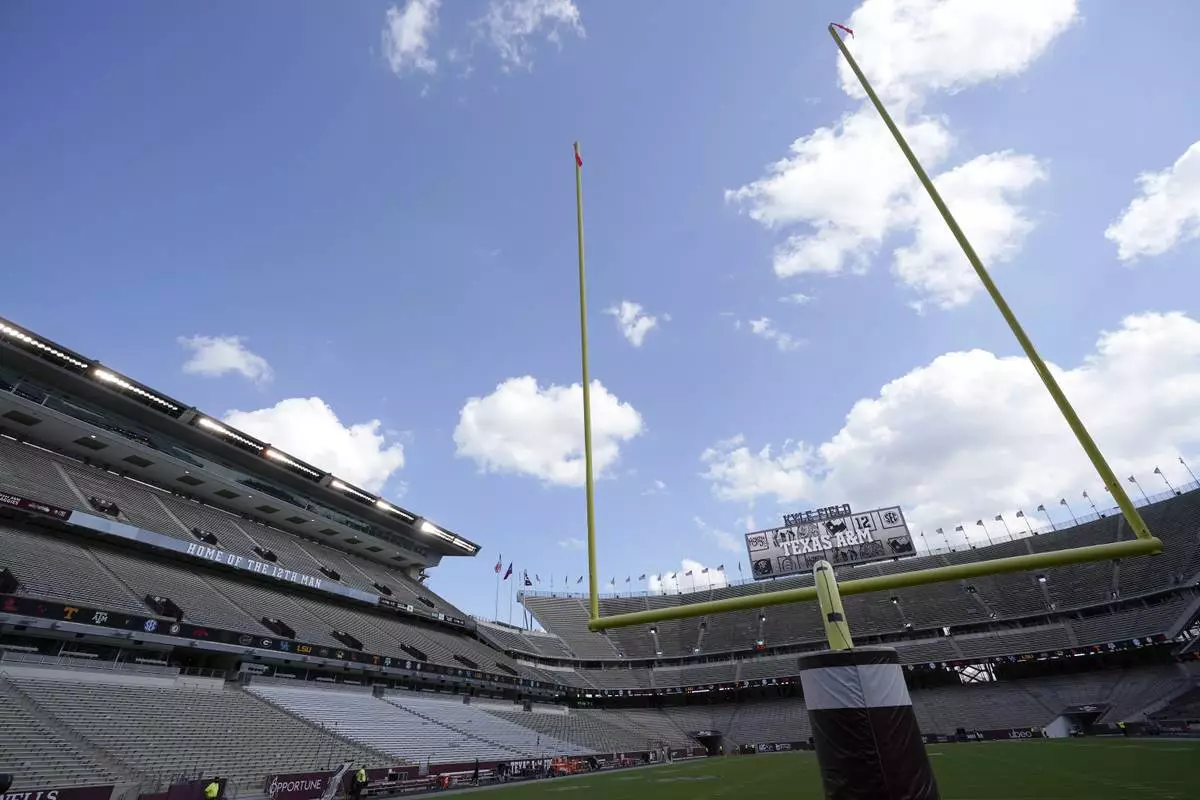
FILE - Kyle Field, home of the Texas A&M football team, is shown before an NCAA college football game against Vanderbilt, Sept. 26, 2020, in College Station, Texas. (AP Photo/David J. Phillip, File)
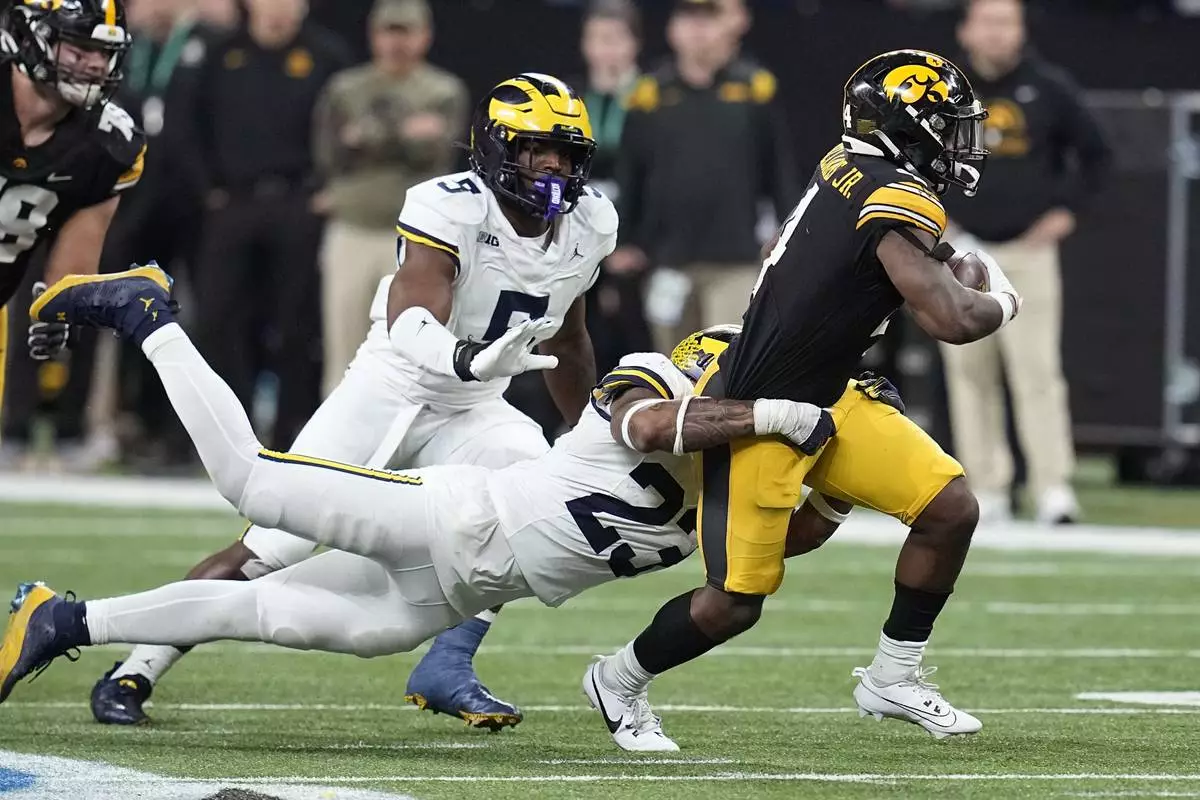
FILE - Iowa running back Leshon Williams (4) runs from Michigan linebacker Michael Barrett (23) and defensive end Josaiah Stewart (5) during the second half of the Big Ten championship NCAA college football game, Saturday, Dec. 2, 2023, in Indianapolis. (AP Photo/Darron Cummings, file)
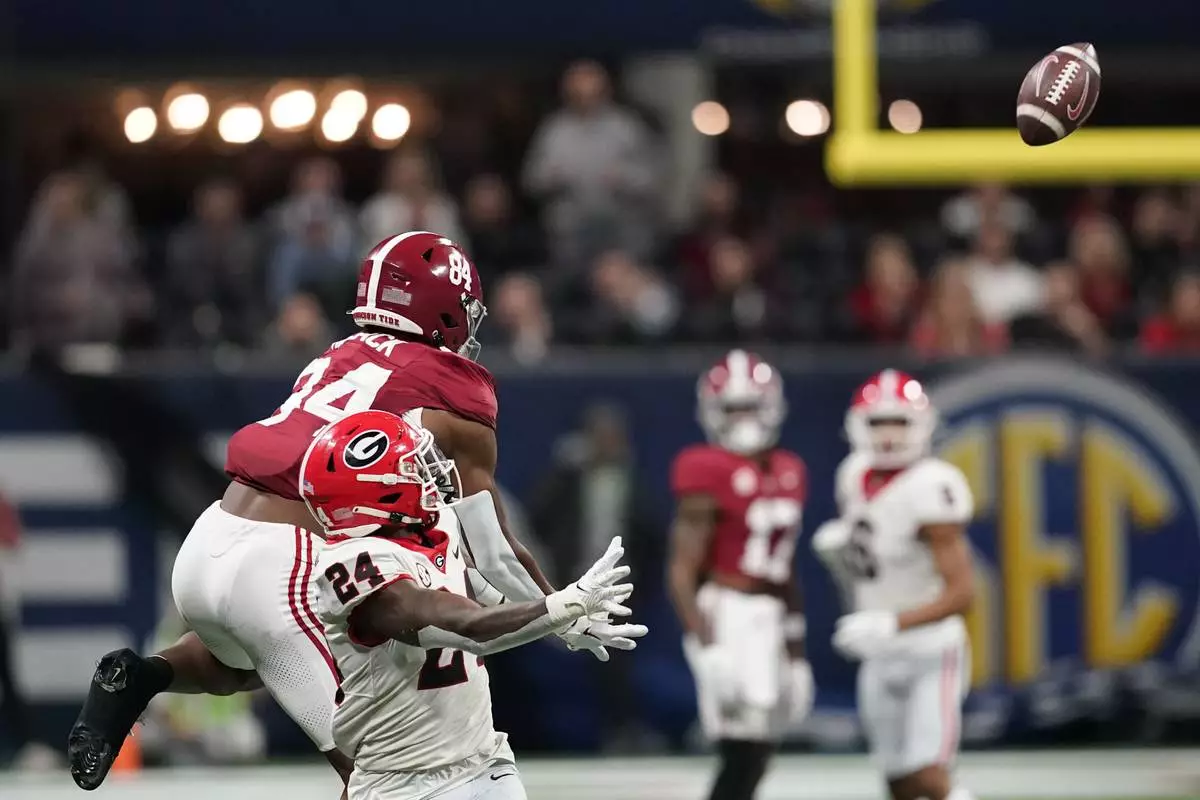
FILE - Alabama tight end Amari Niblack (84) and Georgia defensive back Malaki Starks (24) looks to catch the ball during the second half of the Southeastern Conference championship NCAA college football game in Atlanta, Saturday, Dec. 2, 2023. (AP Photo/Mike Stewart, File)
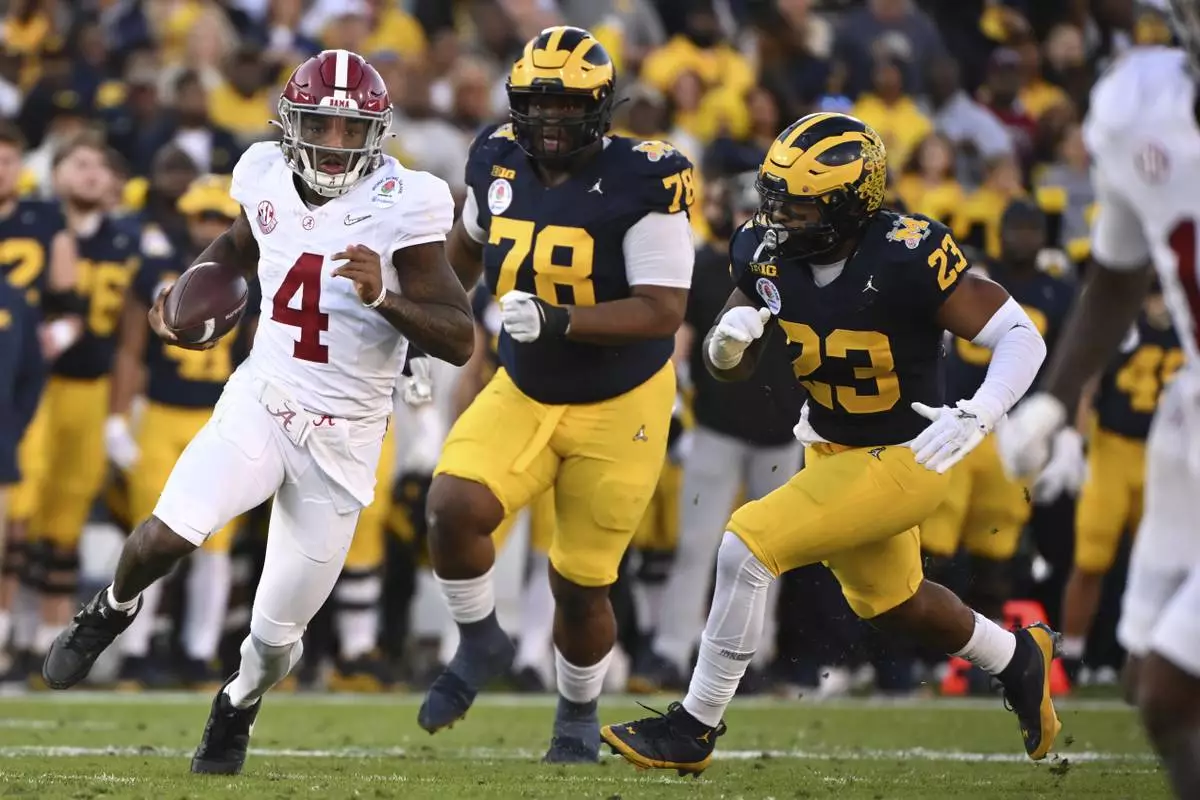
FILE - Alabama quarterback Jalen Milroe (4) runs past Michigan defensive lineman Kenneth Grant (78) and linebacker Michael Barrett (23) during the first half of the Rose Bowl CFP NCAA semifinal college football game Monday, Jan. 1, 2024, in Pasadena, Calif. (AP Photo/Kyusung Gong, File)
















